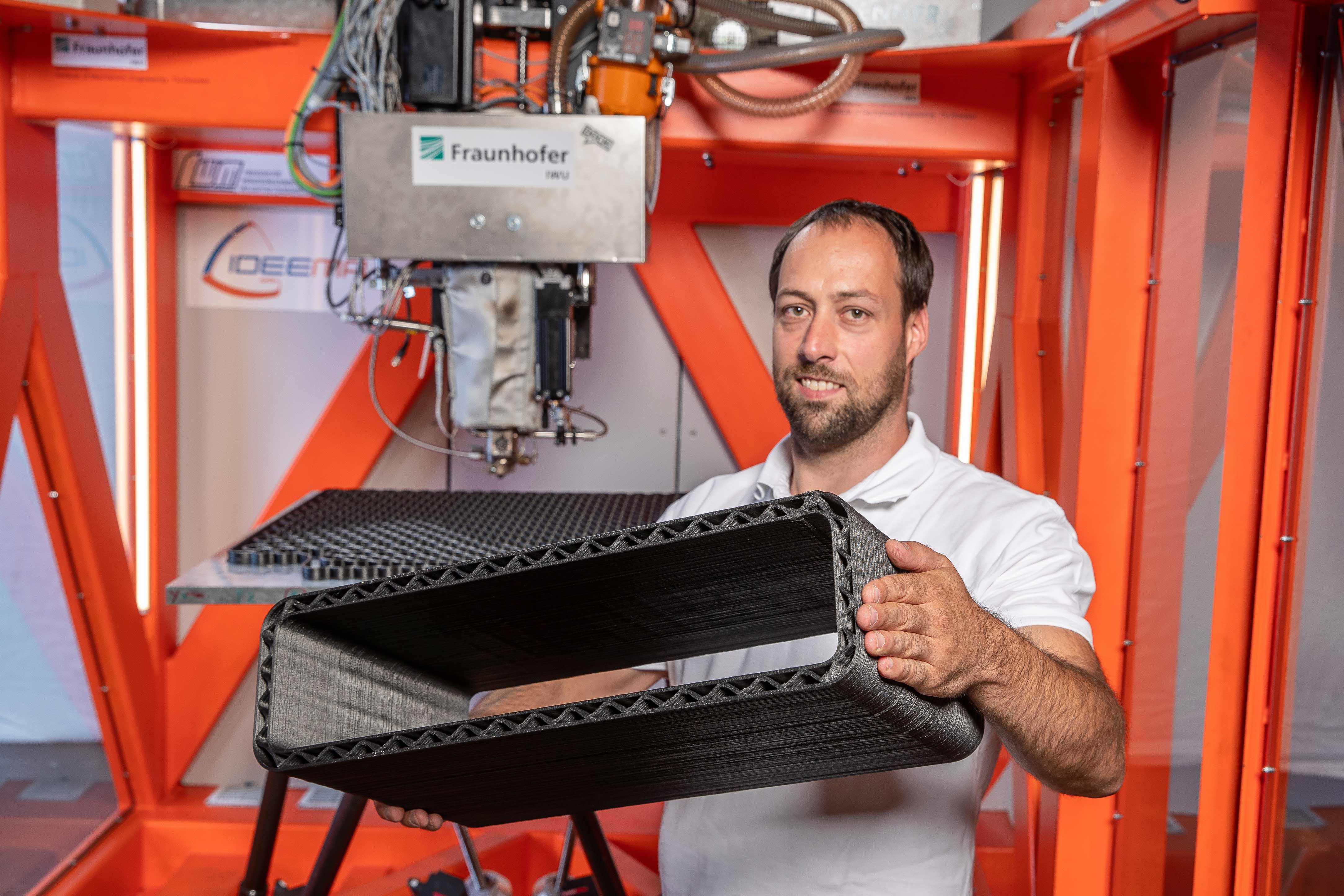
SEAM - Industrial high-speed 3D printing for high-performance plastics

What is the challenge?
3D printing opens up completely new product and manufacturing approaches. However, many 3D printing processes are too expensive and too slow for industry. The key here is to produce large quantities in a short time at competitive costs. Our specially developed SEAM process is not only eight times faster than conventional 3D printing, but also enables the use of inexpensive standard plastic granulate.
What solution do we have for you?
SEAM stands for Screw Extrusion Additive Manufacturing. The SEAM system consists of an extrusion-based plasticizing unit for processing plastic granulate, which is combined with a hexapod. The hexapod - a swiveling 6-axis parallel kinematic system - is equipped with a metal build platform. The hexapod motion system is characterized by high dynamics, low moving masses and the associated high positioning and path accuracy, making it ideal for controlling the motion of the extruder. In addition to this complete SEAM system, the plasticizing unit can also be integrated into other machines and systems.
The printing process takes place by feeding the plastic granulate into the extruder via a modified extrusion screw and plasticizing it. Process speeds of up to one meter per second can be achieved. The resulting plastic melt is then deposited in layers on the building platform. Thanks to the parallel kinematics, the build platform can be tilted in the X, Y and Z axes and moved along under the nozzle of the plasticizing unit in such a way that the previously programmed component shape is produced in a real 5-axis 3D printing process with virtually no support structure. The continuous depositing process enables the production of large-volume, resilient components.
For controlled printing in curves and corners as well as for position jumps without material discharge, the discharge rate must be controlled as a function of the web speed. Due to the very slow plasticizing behaviour of an extruder, a change in volume via the extruder speed is not possible. For this reason, an upstream unit was developed that allows a speed-dependent material discharge of between 0 and 100 percent.
In the SEAM process, a free-flowing, low-cost standard plastic granulate can be processed. As a result, material costs can be reduced by up to 200 times compared to classic fused layer modeling (FLM) processes, where expensive filament is used. A wide variety of plastics have already been tested - from thermoplastic elastomers and polypropylene to polyamide 6 with 40 percent carbon fiber content (PA 6 CF).
What exactly is available now?
With the SEAM process, we offer you industrial high-speed 3D printing for high-performance plastics - as a complete system based on a swiveling 6-axis parallel kinematics hexapod or as a process for integration into your machines and systems.
Which partners were involved in the development?
- Metrom GmbH
- 1A Technologies UG
Further development of the SEAM process
in the joint project: “Material and process development for the production of large-format polypropylene components using the novel high-speed 3D printing process SEAM (SEAM-PP)”
The aim of the project is to make the advantages of the SEAM process for large components usable on an industrial scale. To this end, a joint project with partners from Switzerland and Germany is looking at material development and process design across the entire process chain.

Duration:
05/2020 - 10/2022
Funding body:
Sächsisches Staatsministerium für Wirtschaft, Arbeit und Verkehr

 Fraunhofer Institute for Machine Tools and Forming Technology
Fraunhofer Institute for Machine Tools and Forming Technology